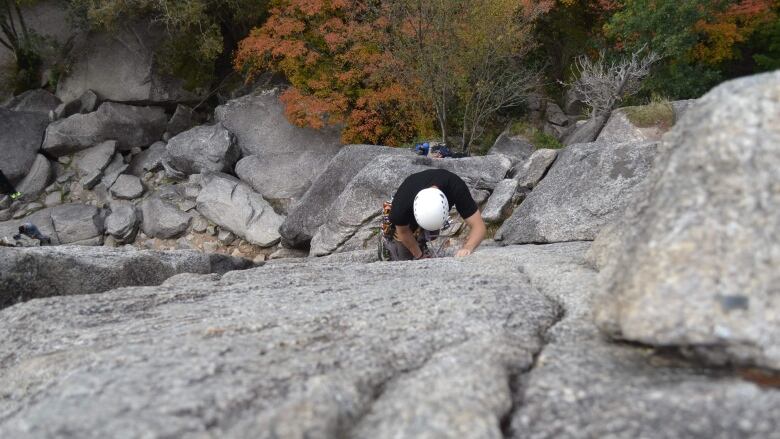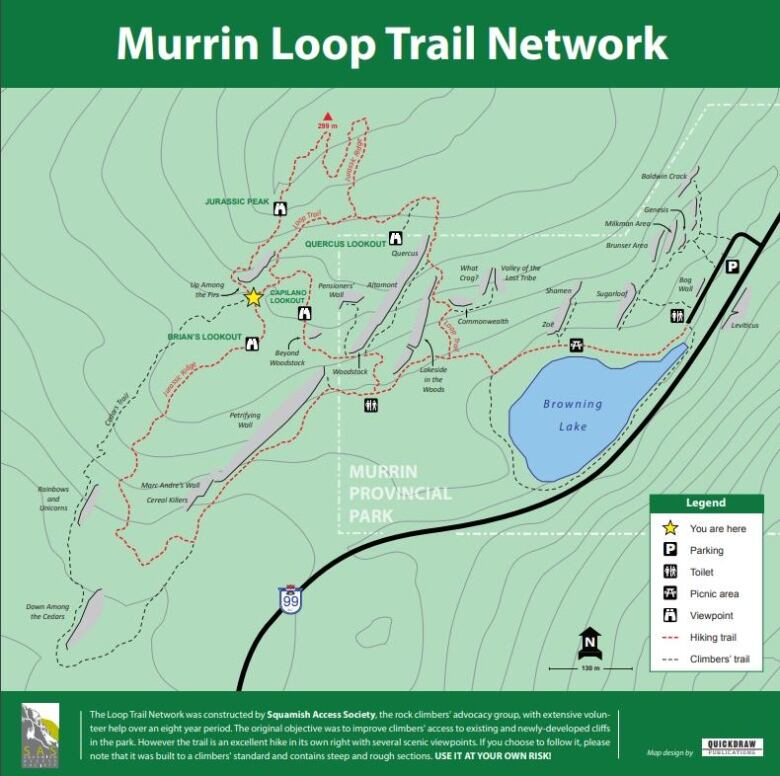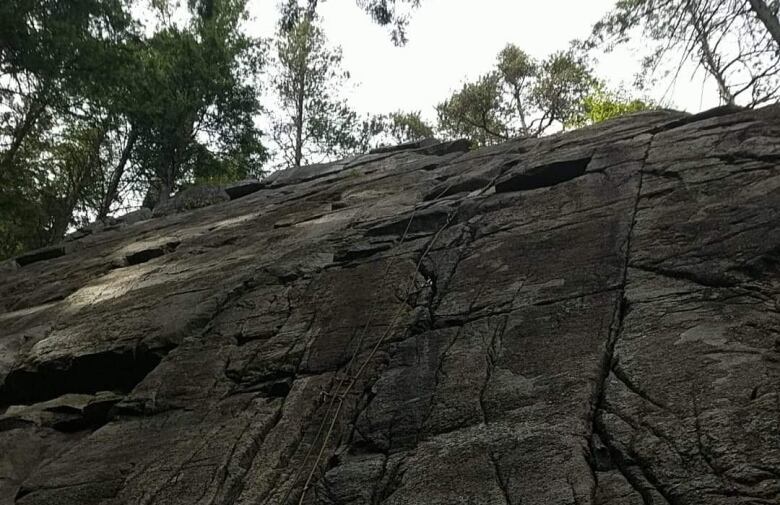Crown land to be returned to Squamish Nation, including world-class rock climbing area
Several prominent climbers are concerned about the future of climbing near Murrin Provincial Park

Long before the small plot of land near a provincial park in Squamish, B.C. was a climbing haven, it belonged to the Squamish Nation and now that it's being returned, the future of the popular climbing area is uncertain.
The province has promised to transfer several parcels of Crown land back to the Squamish Nation in exchange for the First Nation'ssupport of the local Woodfibre LNG project.
One of those areas, known as the Watts Point parcel, is just outside Murrin Provincial Park and boasts dozens of world-class climbing routes as well as several hiking and biking trails.
"Once the land is returned to us, we'll engage our community our own members in terms of developing a land use provision that our community wants for the area," said Squamish Nation spokesperson Khelsilem, who's also known as Dustin Rivers.
"We're going to make decisions that are in the best interests of our people."
The agreement between the province, the Squamish Nation and B.C. Hydro was signed in March but recently garnered attention among the outdoor recreation community when it was brought up at the most recent district council meeting.
Squamish, north of Vancouver, has been dubbed the "outdoor recreation capital of Canada" and is internationally renowned for its climbing, drawing thousands of outdoor enthusiasts and climbing tourists every year.

The future of Petrifying Wall
Several prominent members of the climbing community wrote letters to council, expressing their concern at the potential loss of access to areas near Murrin Park.
"I am astounded that climbers and climbing advocacy groups were not consulted," wrote Marc Bourdon, the author of numerous climbing guide books in the area.
"Murrin Park is one of the oldest and most significant climbing areas in Squamish."
Christie Harvie, senior negotiator with the B.C. Ministry of Indigenous Relations, said the land transfers are key to reconciliation but acknowledged there's room for more public engagement and understanding.
"I'm an Indigenous person, I've been a climber for 22 years and I've been in, out and around the Squamish Nation territory," she said.
"I want to ensure that I get all the information possible and build the best relationships possible when we do these agreements."

In particular, the climbing community is concerned about the future of a climbing area called Petrifying Wall a cliff popular for its steep face climbs that Bourdon described as "one of Squamish's most significant climbing assets."
"As far as I can gauge, no one with detailed knowledge of Crown land recreational use in the Squamish area was consulted," wrote Toby Foord-Kelcey, a Squamish-based climber well-versed in issues of outdoor recreation advocacy.
"Had climbers been consulted, it is likely that a lobbying effort would have been made to request Pet Wall's exclusion from the transfer parcel."
Access to the climbing area will remain open for now but its future ultimately comes down to what the Squamish Nation community needs, said spokesperson Khelsilem.
"There's a certain level of understanding that needs to be had by everybody involved that these lands were originally belonging to the Squamish people," he said.
"People need to respect Squamish Nation's history and culture and understand the context in which they are asking for consultation."












_(720p).jpg)


 OFFICIAL HD MUSIC VIDEO.jpg)
.jpg)



























































































